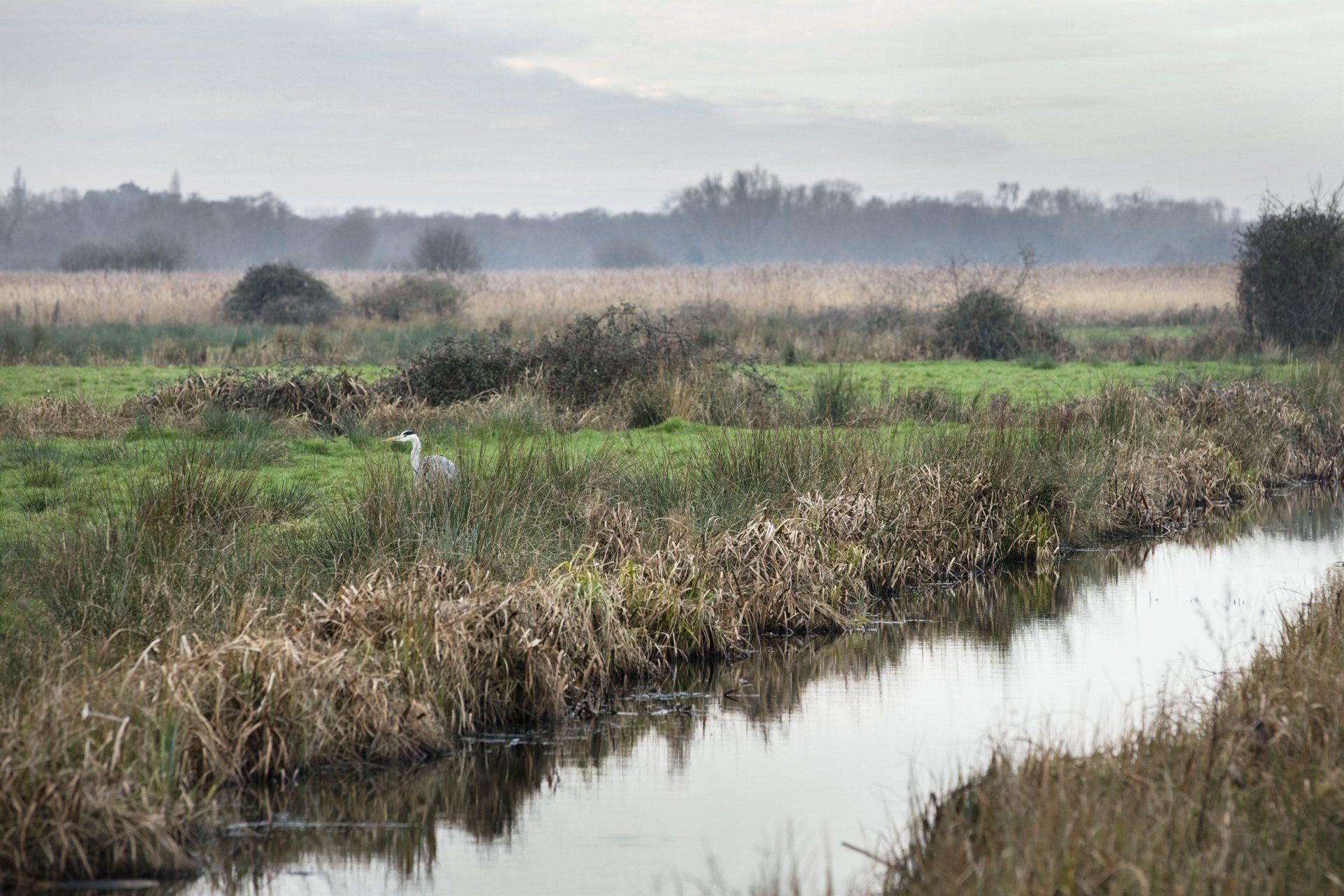Wetlands - Reclaiming the Rain
East Anglia is the driest and most water stressed of any region in the United Kingdom.
Nationally, agriculture accounts for 1% of total water use, whereas in the East of England the average figure for water use in agriculture is 16%.
This, twinned with population increase and water ingress brought on by increased flooding events, means we must embrace more sustainable approaches to water management.
Ruby Shepperson is from Suffolk County Council's Reclaim the Rain initiative and tells WildEast how that might be done.

The Norfolk and Suffolk County Council’s Flood and Water Management Teams were successful in winning £6.4 million as a joint bid to implement innovative sustainable water management projects across both counties. Both councils were awarded the grant as part of Defra’s six-year Flood and Coastal Resilience Innovation Programme and were one of 25 successful projects chosen to take part.
The project, ‘Reclaim the Rain’ is of great importance to both counties, as Norfolk and Suffolk both face considerable local flood risk, as well as water resource scarcity. We are in the driest, most water stressed region in the UK. Across the UK, agriculture accounts for 1% of total water use, whereas in the East of England the average figure for water use in agriculture increases to 16% (Defra). Water is one of the most precious resources we have, so it’s essential we make the most of every precious drop that falls on our land.
Reclaim the Rain sets out to improve flood and drought resilience in at least six small rural communities across Norfolk and Suffolk. We have to think of sustainable ways of managing our water.

We’re called Reclaim the Rain because our goal isn’t just to reduce flooding. We also want to capture that excess water and put it to good use. The project will deliver beneficial flood water reuse by agriculture, industry, communities, and the environment combined with nature-based flood management solutions.
Norfolk and Suffolk County Councils have identified shortlists of targeted communities that may be suitable places to work with us. The selection of these communities for was based on various factors, including their vulnerability to surface water flooding, water resource needs, rurality and the likelihood of attracting funding outside of our project via traditional funding processes.
Engagement with these target communities will help inform which six case studies we take forward and work with throughout the lifetime of Reclaim the Rain. We want to work with communities that have an interest in, for and about how we deliver sustainable holistic water management schemes in their communities.

The project will involve both partner organisations and communities in the development of suitable flood water reuse schemes. The schemes will address the community’s needs in terms of flood risk and water resource requirements, and could result in provision of:
· Habitat creation and restoration;
· Natural Flood Management;
· Rain Gardens;
· Rainwater Capture and Reuse for community, agriculture or business use;
· Retrofitted SuDS;
· Smart Leaky Water Butts and more…
The case studies will be specific to the communities that they serve, designed to increase flood and drought resilience, as well as incorporating wider environmental and social benefits too. Any ways that we can find a more sustainable use for otherwise ‘problematic’ flood water will benefit us now and in years to come as a water resource.

To find out more and express your formal interest, visit our website www.reclaimtherain.org
More information regarding Defra’s Flood and Coastal Resilience Innovation Programme and the other successful 24 projects can be found here: Flood and coastal resilience innovation programme - GOV.UK (www.gov.uk)
WildEast Blog

Powered by LocaliQ
Follow Us
SIGN UP FOR NEWS & UPDATES
Newsletter Sign Up
Thank you for signing up to our newsletter.
Please try again later.
Privacy / Terms & Conditions / Sitemap
